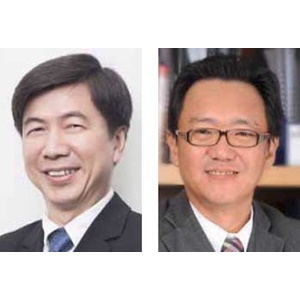
Consultant Plastic and Reconstructive Surgeon, Dr. Lee Kim Siea and Senior Consultant at Yun & Stats Consulting, Dr. Lim Teck Onn have embarked on new clinical research aimed at soft tissue reconstruction via small amounts of fat and stromal vascular fraction (SVF). According to the Malaysian Ministry of Health, large volume fat grafting is only limited to plastic surgeons. However, what happens when affected areas are small and only require minimal fat transfer for reconstruction? As Dr. Lee and Dr. Lim focus in this area, both have invited doctors and patients to be part of a clinical registry to prove the efficacy of fat transfer combined with SVF. Not only will doctors study fat harvesting techniques, they will learn new scientific protocols pertaining to the benefits of stem cells. We speak to Dr. Lee and Dr. Lim as they explain the mechanics behind this procedure, registry eligibility and what doctors can expect if they sign up.
What is soft tissue reconstruction and SVF ?
Dr. Lim: Soft tissue reconstruction is transferring fat from one part of the body to another. Via this technique doctors are able to augment the volume and shape of a certain area to improve its cosmetic appearances. SVF, however, is a fraction of the fat tissue obtained after processing which is rich in stem cells and other soluble factors, aiding in better results.
Dr. Lee: Soft tissue reconstruction with fat is basically extracting freely harvested fat from the thigh or lower abdomen and then injecting it back into patients to improve soft tissue defects. SVF is fraction-obtained from fat after digestion with enzymes, and is rich with nucleated cells and stem cells. To obtain SVF, we will harvest fat and spin tissues down so that unwanted liquids are removed. We will then subject the pure liquid to enzyme digestion and incubation. Later, the fat is washed and centrifuged to a point where all nucleated cells sink to the bottom. Although the top portion of fat will be thrown out, the bottom half of the centrifuged fraction, which encompasses clear liquid rich in stem cells, will be injected back into the patient.
What are the benefits of cell-enriched fat grafts ?
Dr. Lim: While fat grafting treatments may be a popular cosmetic procedure, effects aren’t long lasting due to poor graft survival. By enriching fat grafts with SVF, we believe fat cell survival will improve. Through this clinical registry, we will be able to provide ongoing evidence to demonstrate the efficacy and safety of the treatment, and thereby, increase patient and doctor confidence in the treatment. Dr. Lee: With conventional fat grafts, all we do is extract fat, centrifuge the tissues and inject it back into patients. Via this process, all patients will experience some sort of fat loss due to dying fat cells. When tissues survive, they actually endure because of the stem cells within the fat that transform into fat cells. Through our research, we will try to prove that nucleated cells rich in stem cells will help improve the take-rate of fat grafts, and to further prove that SVF is safe and appropriate for soft tissue reconstruction and other forms of cosmetic procedures.
Who is eligible for this clinical registry and what can participants expect ?
Dr. Lim: The Malaysian Ministry of Health has already approved the registry protocol. Once numbers are
achieved, the administered treatment and data collected will demonstrate the ongoing safety and efficacy of this treatment. Interested parties can participate as investigators where they’ll be required to follow certain fat grafting and SVF protocols. Once they perform the required protocols on patients, doctors will also have to collect data such as before and after photos and patient results.
Dr. Lee: Doctors will learn fat harvesting techniques and standard scientific protocols and because participants cannot deviate from fixed practices, they will have to utilise the Lipokit device. If doctors would like to qualify and become an investigator, they will need MBBS certification and apply with the Malaysian Ministry of Health. Moreover, because this research calls for fat harvesting, processing and re-injection, aesthetic doctors who are well versed in small amounts of fat grafting are welcome to join.

